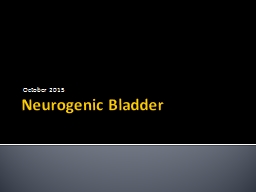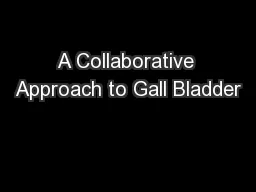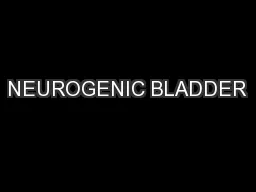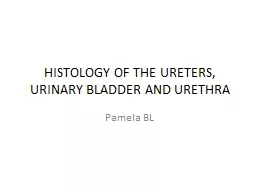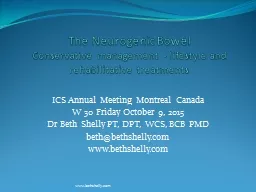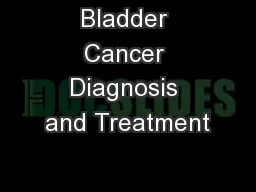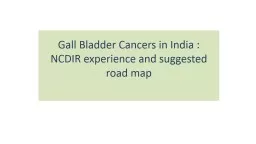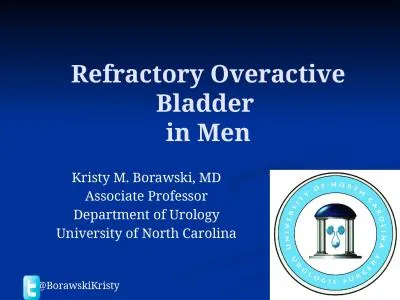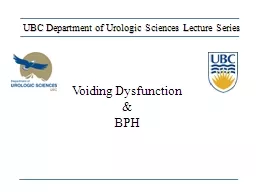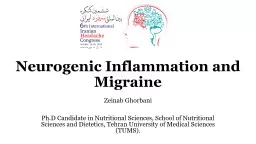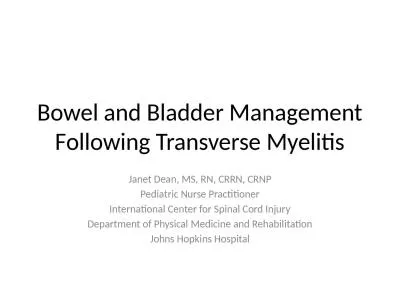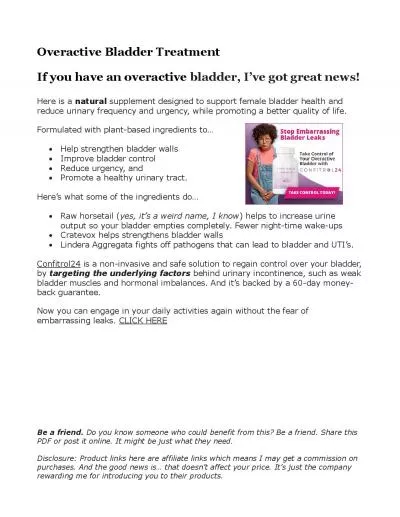PPT-Neurogenic Bladder October 2015
Author : maisie | Published Date : 2023-07-08
Normal micturition Normal micturition involves proper function of both bladder amp urethra A detrusor of normal compliance amp a physiologically competent urethral
Presentation Embed Code
Download Presentation
Download Presentation The PPT/PDF document "Neurogenic Bladder October 2015" is the property of its rightful owner. Permission is granted to download and print the materials on this website for personal, non-commercial use only, and to display it on your personal computer provided you do not modify the materials and that you retain all copyright notices contained in the materials. By downloading content from our website, you accept the terms of this agreement.
Neurogenic Bladder October 2015: Transcript
Download Rules Of Document
"Neurogenic Bladder October 2015"The content belongs to its owner. You may download and print it for personal use, without modification, and keep all copyright notices. By downloading, you agree to these terms.
Related Documents

